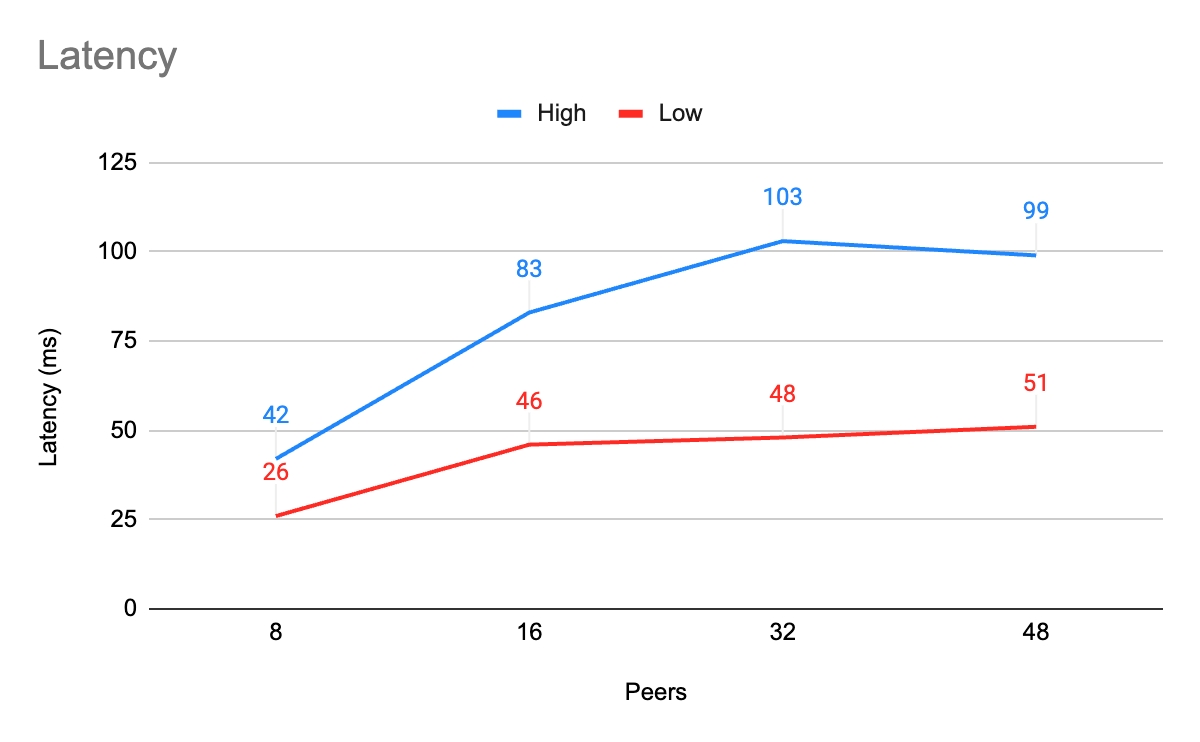Performance Analysis
Two metrics are considered when measuring TCE’s performance: latency & throughput. Latency measures the time it takes to calculate the final order of a message after it has been submitted. This latency is sometimes referred to as “time to consensus” or “creation-to-consensus (C2C)”. Throughput measures the number of messages per second that reach finality.
We tested for latency using the following configuration:
Azure Standard D8ds_v5: 8 vCPU, 32 GiB memory, 300 GB SSD storage, 12,500 Mbps max network bandwidth
Sync interval: 8ms - 12ms
Transaction size: 128 bytes
The results showed latency as low as 26ms with 8 peers and as high as 103ms with 32 peers. Not shown on the graph is that the average throughput with this configuration was between 262,000 - 289,000 TPS for all peer counts. More peers slightly increases the throughput, but where most games only require between 60-120 TPS x the number of peers, TCE provides almost an order of magnitude of headroom for TPS.

This latency has proven to be sufficient for most multiplayer game types. Certain game types are more sensitive to latency than others. These game types include competitive first-person shooters (FPS) and some real-time strategy games where latency over 50ms is considered unacceptable. Additional tuning may bring TCE’s latency down even more and game netcode may be able to compensate for this latency. Importantly, most game types can be satisfied by TCE’s latency results with little netcode compensation.
Additionally we tuned for throughput which resulted in higher latency but also significantly higher throughput. With the same configuration as the latency test, but with emphasis on throughput, TCE is able to achieve 1,026,000 TPS with an average latency of 857ms, a low of 735ms, and a high of 977ms.
This is a significant milestone for public ledger applications. Not only can TCE be tuned for low-latency applications like gaming with throughput that is significantly higher than other DLT protocols, TCE can be tuned for high throughput applications with 2-3 orders of magnitude more TPS than most mainstream public layer 1 and layer 2 networks.